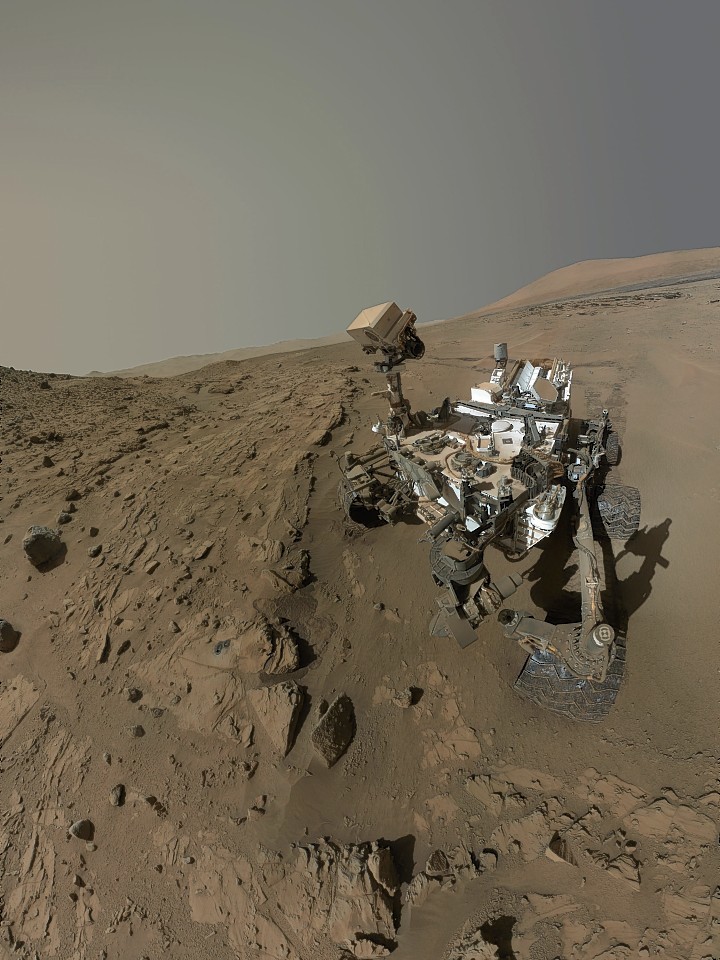Scientists who sent a robot to Mars are celebrating with a selfie after it tallied up 687 earth days on the planet – otherwise known as a Martian year.
NASA’s Curiosity used the camera at the end of its arm to take this self-portrait, marking the conclusion of a remarkable year.
The rover has already determined that the Red Planet could once have supported life and experts, including north-east scientist John Bridges – one of two British team leaders on the Mars Science Laboratory Mission – are hoping it will uncover many more discoveries.
One of Curiosity’s first major finds was an ancient riverbed at its landing site.
The mission met its main goal of determining whether the Martian Gale Crater was ever habitable for simple life forms at an area known as Yellowknife Bay.
The answer came from two mudstone slabs that the rover sampled with its drill.
Analysis revealed the site was once a lake bed with mild water – the essential elemental ingredients for life – and a type of chemical energy source used by some microbes on Earth.
If Mars had living organisms this would have been a good home for them.
Mr Bridges, 47, a planetology expert from Newmachar in Aberdeenshire, earned his place on the mission after contributing an idea for the robot at an early stage of the project.
He said: “This mission has been very successful and really exceeded our expectations.
“Before Curiosity, we had an idea that there could clay rich deposits in Gale Crater but unless you got up really close to the rocks you couldn’t really be sure.
“We’ve done that now and this remarkable discovery has increased our understanding of Mars.
“Now we can see that the environment about four billion years ago was habitable – it’s a great step forward and hopefully there will be much more to come.”
The Curiosity team now hopes to make further discoveries at an area known as Mount Sharp, where scientists expect geological layering will reveal answers about ancient environments.
